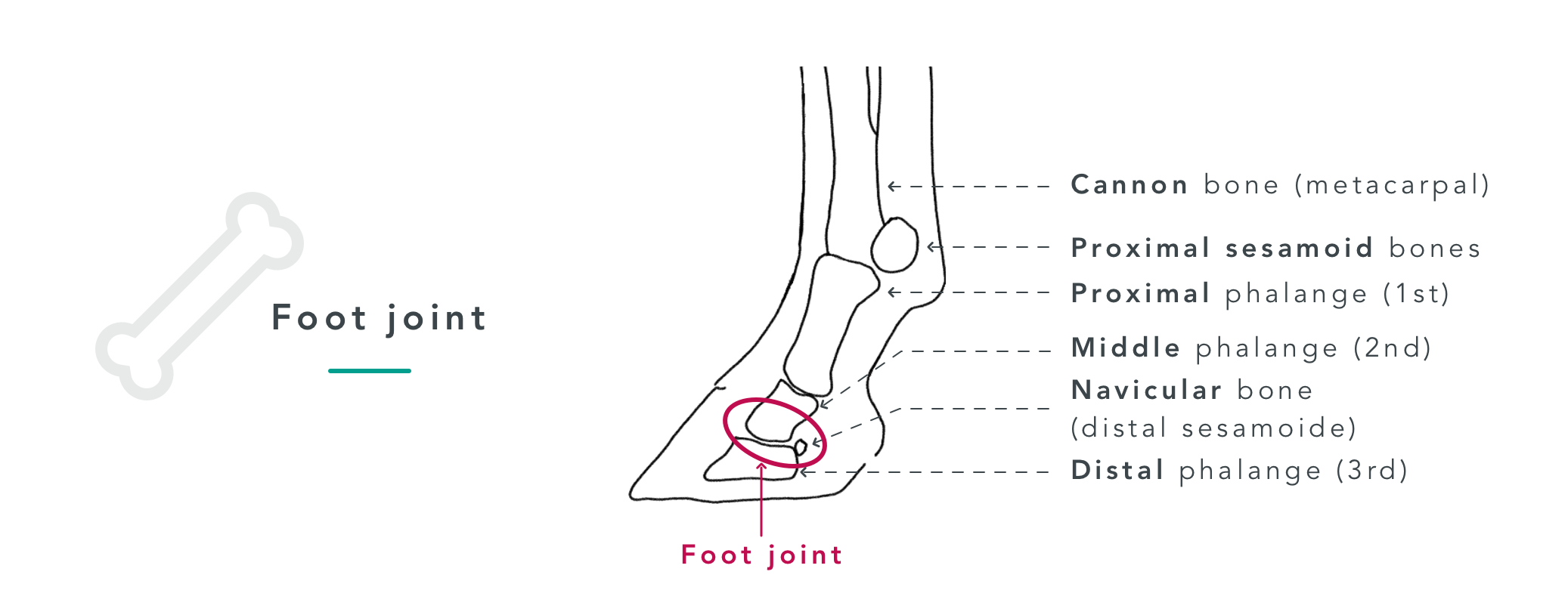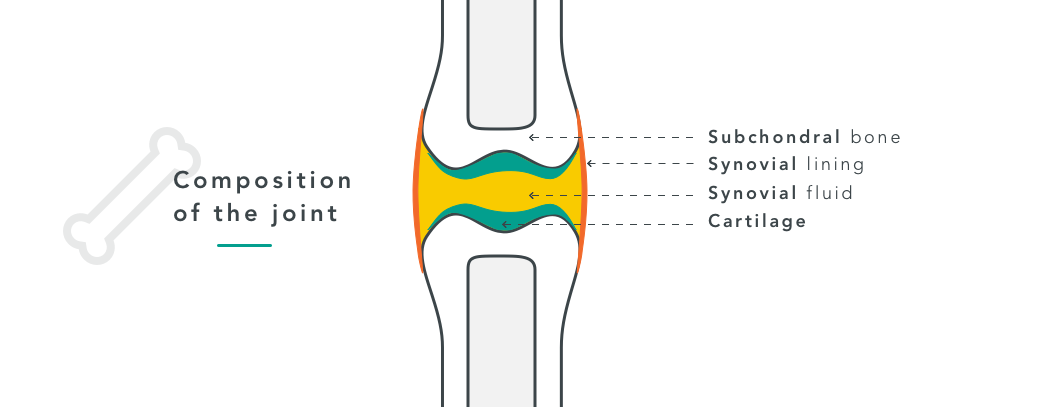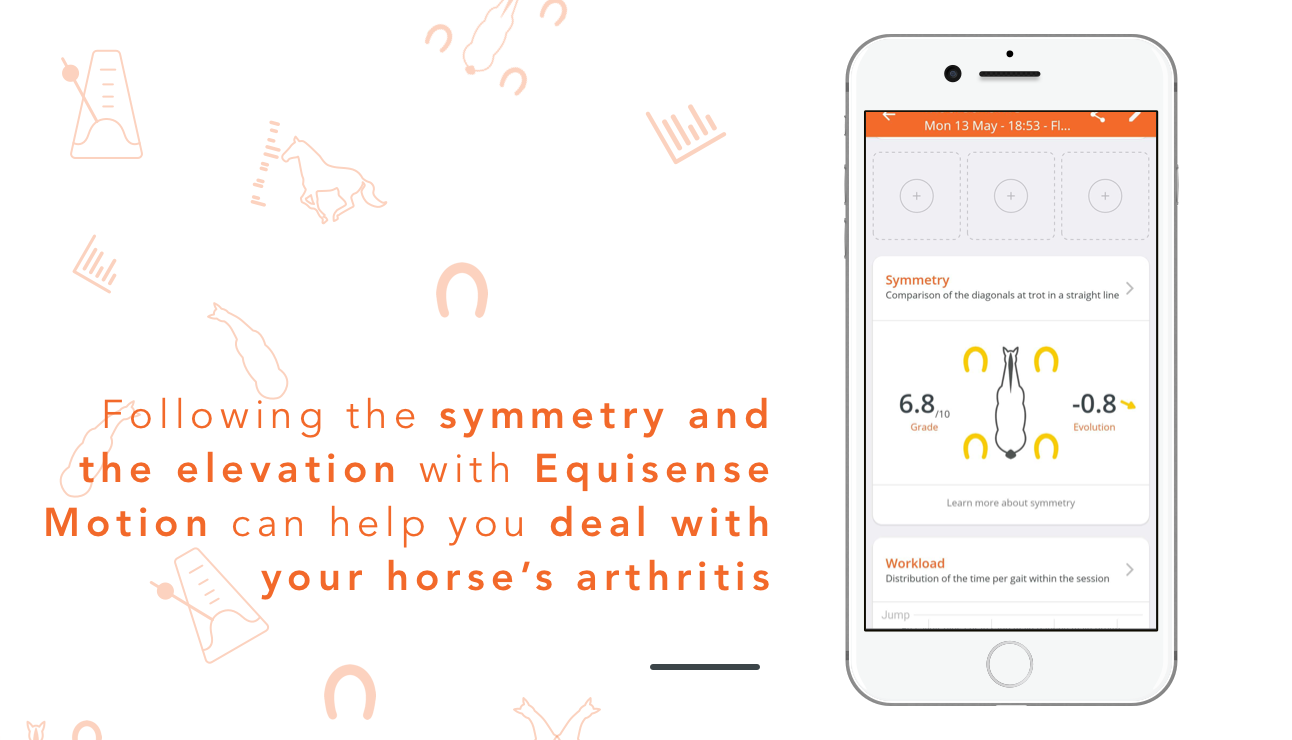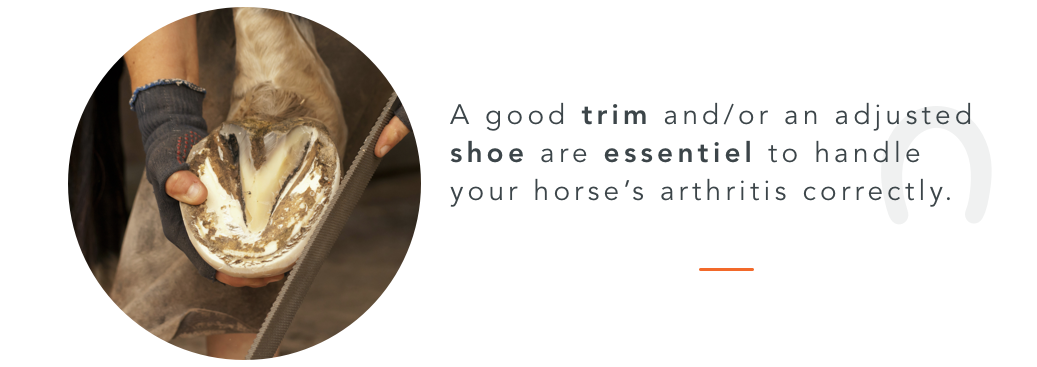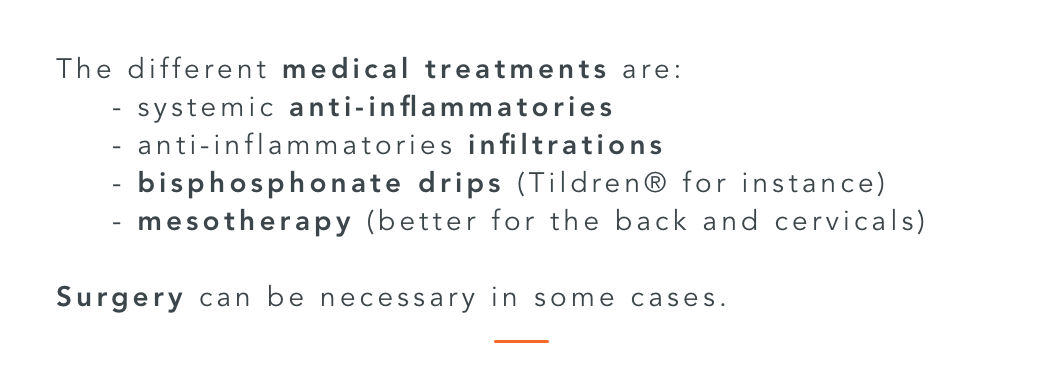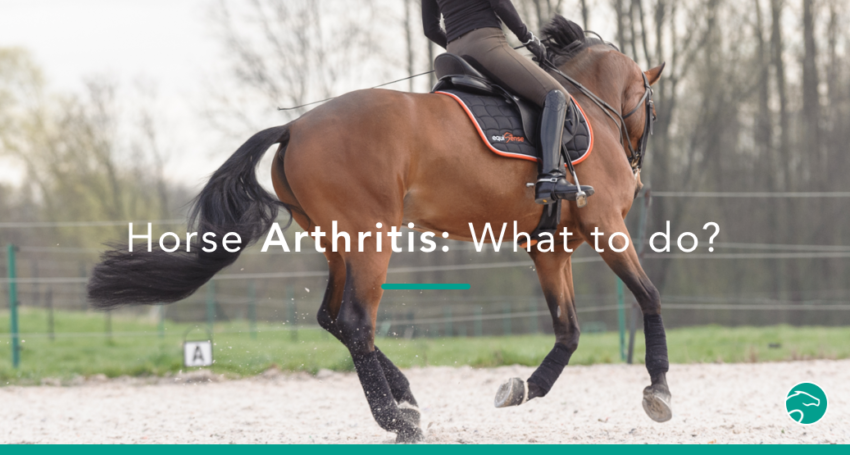
4 Tips to Deal with your Horse’s Arthritis
Your horse has arthritis and you’re not sure what you could do to make things easier for it? Or you’re concerned your horse will have this disease one day and you want to know all about it beforehand? This article is made for you! ⏬
Arthritis, it’s a bad word that makes us all think about old horses. When it’s actually a degenerative disease which can affect young horses as well (from 5-year-old on). It’s a pretty common disease for sport horses, particularly show-jumpers but also leisure horses. We’ll use in this article the example of the feet arthritis, but it’s pretty much the same for every joint.
Table des matières
As usual, let’s start with a bit of anatomy…
The feet joint is scientifically called the “distal interphalangeal joint”. This represent the joint between the last two phalanges (the fingertips for us). It contains 3 bones: the 3rd phalange (distal), the 2nd phalange (middle) and the navicular bone (= distal sesamoid bone).
The articular cartilage of the joint is thick. That is because of its cushioning function. Indeed, this joint is under a lot of strain when the horse moves because it cushions the irregularities of the ground. [1]
#1 – How does arthritis work?
Feet arthritis (scientifically called “distal interphalangeal arthritis”) is a cartilage degeneration. Let me explain.
The cartilage
Both bony ends making up a joint are covered in cartilage. It’s thanks to the cartilage that both bones can glide against each other and, this way, ensure the mobility of the joint. The stability of the joint is ensured by a capsule creating a “bag”. The inner part of this bag is covered by a membrane: the synovial lining. This lining will create the joint liquid, also called synovial fluid. It oils up the joint and nourishes the cartilage at 95%.
The cartilage is a special tissue, made up of only one type of cells called chondrocytes. They synthesize the cartilage matrix. What is cartilage matrix? It’s a sponge made of big molecules, very greedy in water, confined in a non-extensible net of collagen fibers.
Arthritis is actually a response to excessive pressure on the cartilage.
The pressure exerted causes a breach in the collagen net. The cartilage swells up with water (edema) and it becomes vulnerable and divides. This way, cartilage fragments fall into the joint.
Under the pressure, the cartilage cells (chondrocytes) become overactive by trying to fix the cartilage. Lastly, they end up depleted and they die.
If arthritis first manifests in the cartilage, the other elements of the joints will also be affected. The synovial lining will try to clean up the cartilage fragment fallen into the joint cavity. It will react by creating an important quantity of synovial fluid, which signals the inflammation. The bone will thicken because of this pressure and create a bone growth named an “osteophyte” around the joint. You can see it clearly on the radiograph.
What you need to understand is that the osteoarthritis process is a vicious circle. The progressive destruction of the cartilage decreases its suppleness and its cushioning capabilities, increasing the mechanical stress and encouraging the destruction. It is a self-aggravating disease. [4]
#2 – How to detect arthritis on time? [4] 🔍
This disease mostly appears in horses around 5 to 10-year-old. The troubles are treacherous. You might detect a progressive and sporadic lameness. You might encounter difficulties while working, without seeing a real lameness: your horse could have a hard time doing some exercises, and your results during shows will decrease.
Often if there is a lameness, it is accentuated on a circle and hard ground. It also improves when the horse is warmed up.
By the way, you can use Equisense Motion or Motion S to follow the evolution of the symmetry and the elevation which can alert you if the locomotion gets worse.
Of course, take some time to observe your horse in its stall. It can position itself to get a bit of relief, with its foreleg in protraction.
#3 – Use the right treatment [4]
There are a lot of possible treatments. Of course, you have to adjust to each case.
A trim and/or a shoe 👣
An orthopaedic treatment will ensure the transversal and longitudinal balance of the foot, static or in movement. The veterinary will evaluate the joint with a radiograph and adjust the trim and/or the shoe depending on the injury.
If you shoe your horse, it has to be light and have a good cushioning effect, with a rounded inner and outer toe. The goal here is to help the feet rotate in every direction.
A medical treatment 💉
The medical treatment depends on the horse, its activity and the injury. The goal is to decrease the lameness by decreasing the pain in the joint. This is something you have to talk about with your veterinary. This can be a local treatment, in the form of intra-articular injections (infiltrations). Note that repeated injections in the joints can alter the cartilage. You should be careful with this type of injections.
There are other possible treatments like bisphosphonate drips or mesotherapy.
The goal here is to control the lameness to help the joint recover.
Surgery 👩🔬
Lastly, you might have heard about arthroscopies. When the osteophyte creates a mechanical conflict with the middle phalange (in this case, the discomfort for the horse is important), it can be a good idea to treat the injury surgically. The surgeon will enter the joint with a little camera to clean it.
Dietary supplements
If dietary supplements can’t be considered a treatment, they can be really useful to prevent the disease and help the horse build good cartilage, or as a support when the disease is already there.
#4 – Adjust the activity [4] 🐎
A regular activity (and controlled) is advisable for horses with feet arthritis. Start with a long warm up at walk, then slow trot. You’ll find the locomotion improves with exercise. The terrain should be supple and regular. An irregular terrain would unbalance the joint. You should also avoid small circles and the exercises your horse has a hard time doing.
It’s important to adjust the work to your horse’s answer to treatment. Let me explain. If, after the treatment, your horse isn’t lame anymore, don’t hesitate to start working normally again. On the contrary, if you still note a discomfort, reduce the workload and give you horse anti-inflammatories to reduce the pain.
Let’s also keep in mind that it’s important to keep your horse active to avoid your horse being overweight: it’s important to avoid worsening the injury by adding to the pressure on the joint.
To conclude:
We could only talk about feet arthritis but it’s important to note that arthritis can happen in numerous joints: the fetlock, the hock, the shoulders, the back, etc. It’s hard to prevent it because the feet joints undergo a lot of pressure. A good farrier and a good ground are important to prevent this disease.
I hope you liked this article and that it helped you understand this disease better.
Marine Slove,
Veterinary.
